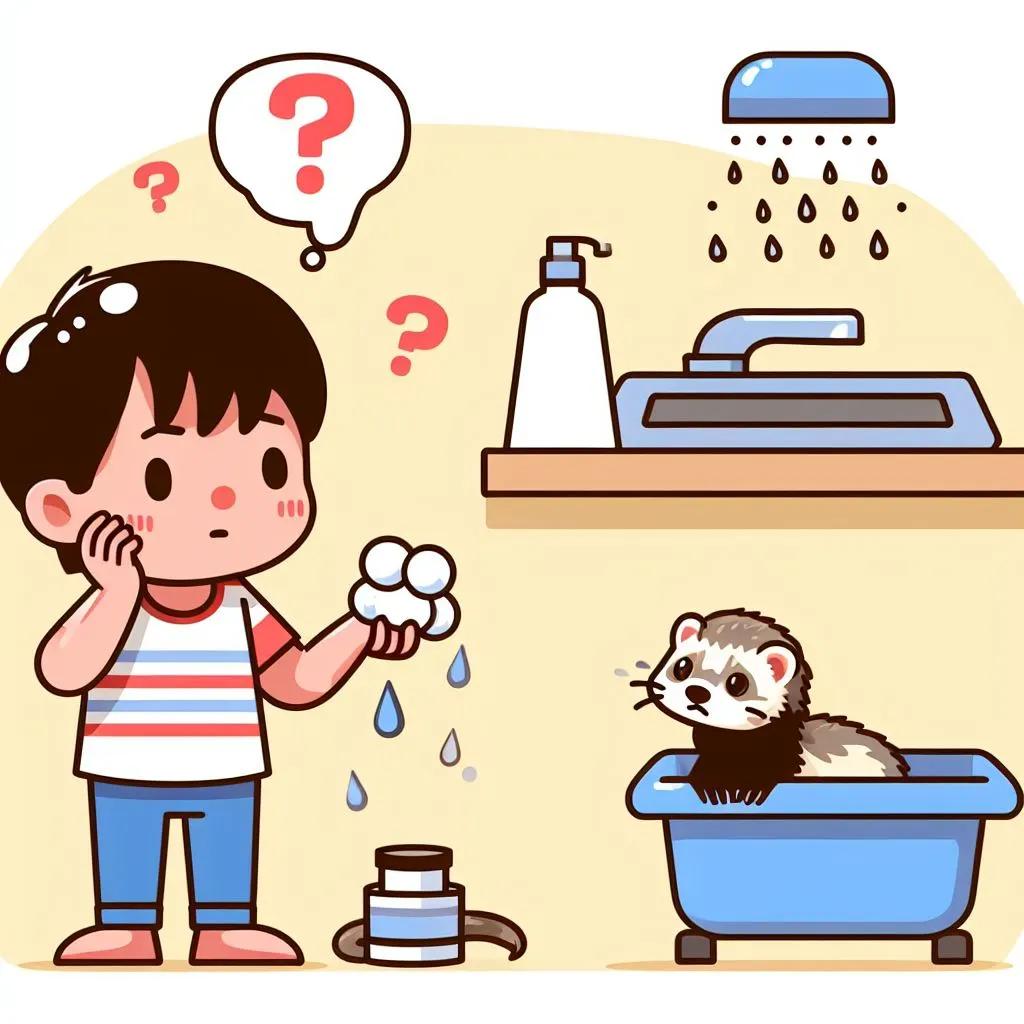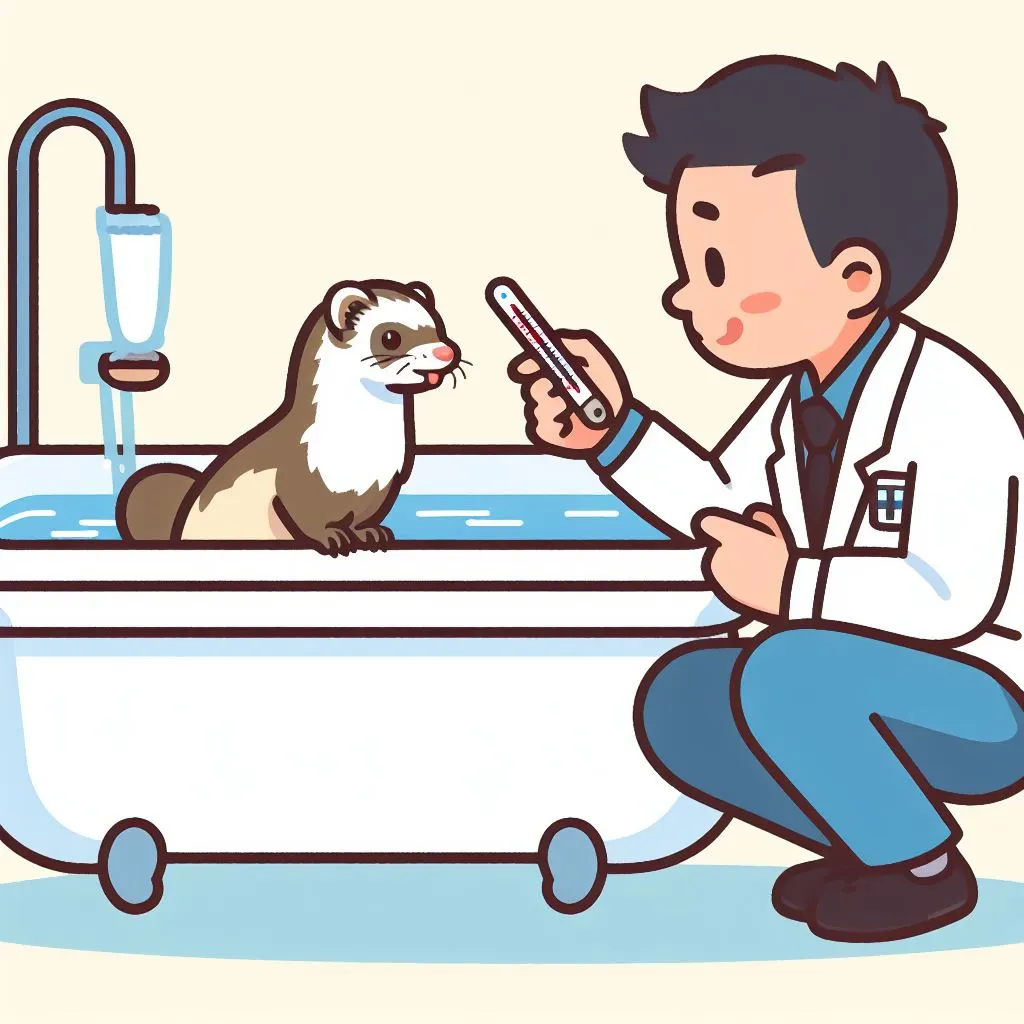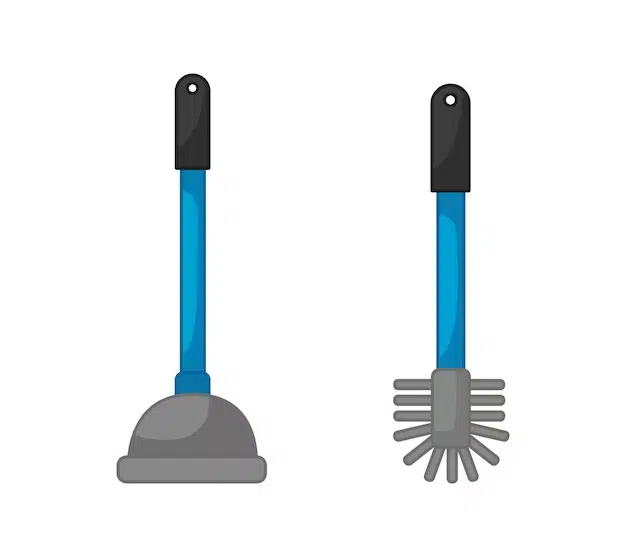How To Bathe A Ferret? A Step-By-Step Guide (With Tips!)

Ferret bathing is a process that involves cleaning your ferret skin from any dirt, poop or a routinely procedure practiced by ferret owners. This article explores on bathing a ferret that includes the following topics
- Why Should You Bathe Your Ferret?
- Where Should You Bathe Your Ferret?
- What Are the Things Required For Ferret Bathing?
- How To Bathe A Ferret?
- Does Bathing A Ferret Reduce Their Smell?
- How often should you bathe your ferret?
- On What Water Temperature Should You Bathe A Ferret?
- Why Do Some Ferrets Hate Baths?
- How To Bathe An Anxious Ferret?
- How To Prevent Ferret Scratching Your Hands During The Bath?
- How To Examine Your Ferret For Health Issues During the Bath?
- How To Ferret-Proof A Bathroom?
- What Is An Oatmeal Bath For Ferret?
- What Are the Benefits Of Oatmeal Baths For Ferrets?
Why Should You Bathe Your Ferret?
You should bathe your ferret because it is a part of the ferret grooming routine and necessary for hygiene purposes or if your ferret has stepped on something dirty or has came in contact with its own waste. If your ferret’s skin becomes dry and itchy, a bath can help alleviate discomfort. While it may not be necessary to bathe them frequently, there are certain situations where a bath becomes crucial.
Where Should You Bathe Your Ferret?
To bathe your ferret, you have a few options on where to do it. Let’s explore the different possibilities:
- Bathtub: A bathtub can be convenient because if your ferret ends up going to the bathroom during their bath, it’s easy to clean up. Just make sure to use lukewarm water and a gentle shampoo made specifically for ferrets.
- Kitchen Sink: A kitchen sink can be a good choice if you have a smaller ferret or if you prefer not to use the bathtub. Again, use lukewarm water and a gentle shampoo designed for ferrets.
- Small Tub Inside Your Bathtub: If you want a more controlled environment, you can place a small tub inside your bathtub and bathe your ferret there. This allows you to contain them in one area while still having access to running water from the faucet.
When choosing where to bathe your ferret, consider their size and comfort level. Some ferrets may feel more secure in a smaller space like the kitchen sink or a small tub within the larger bathtub.

What Are the Things Required For Ferret Bathing?

The following are the things required for ferret bathing
- Healthy Treats
- Towels
1. Healthy Treats
Having healthy treats such as salmon oil, salmon paste, raw eggs, and raw or cooked meat on hand can help keep your ferrets incentivized and make the bathing experience more enjoyable for both of you. Bathing can be a stressful experience for some ferrets, so it’s important to keep them distracted and motivated throughout the process.
2. Multiple Towels
After the bath, drying off your ferret is essential. Using multiple towels can make this process easier. Start by using one towel to gently rub down your ferret’s fur and remove excess water. Then, place another towel in the drained bathtub or on the floor where your ferret likes to run around. This will ensure they don’t get wet again while they continue exploring.
Should I Use Shampoo When Bathing A Ferret?
From our experience, using water and scrubbing is the best way to bathe a ferret. Use shampoos made specifically for ferrets if you are thinking about it . Do not use human shampoos as it can strip the ferret of its natural oils, which can make them smell even more.
- Gentle on the skin: A human Shampoo may contain harsh chemicals that can irritate a ferret’s sensitive skin. Water and gentle scrubbing are much gentler options.
- Cost-effective: Water is readily available in most households, making it a cost-effective choice for bathing your ferret.
A ferret shampoo that we recommend is the Petpost | Ferret Shampoo which contains natural ingredients and is made specifically for ferrets.
How To Bathe A Ferret?

To bathe your ferret, you need to follow a step-by-step process that ensures their comfort and safety. Here’s how you can give your ferrets a proper bath:
1. The Initial Process
- Fill the tub with 2-3 inches of lukewarm water which is around 101 to 103 degrees Fahrenheit, allowing the ferret to rest their feet and keep their head above the waterline.
- The goal is not to make them swim but to create a comfortable environment for them to move around.
2. The Bathing Process
- Gradually place your ferret in the bathtub, allowing them to get accustomed to the water.
- Don’t worry if they move around or drink some of the water; it’s their usual behavior.
- Support your ferret by placing one hand underneath their body while using the other hand to wash their skin.
- If your ferret is anxious or keeps moving around, try applying salmon oil on your forearms. They’ll be busy licking it while you finish washing.
- When washing their face, avoid getting water directly in their eyes. Instead, lather water from their neck up to their chin.
3. Massaging the Ferret
- While massaging their face with damp hands, remember to wash their paws as well since they tend to back up into litter boxes and get dirty.
- Lightly massage their body, including underarms, belly, butt, and tail.
4. After Bath
- Drain the bathtub and lift your ferret from its butt.
- Gently squeeze its little body to remove excess water.
- Use a towel to dry its skin thoroughly—back, belly, and tail.
- Place another towel in the bathtub so that your ferret can continue drying itself by moving around.
- After bathing, expect your ferret to spend time grooming itself and occasionally coughing due to excessive licking, which is normal.
- Let your ferret explore the house but ensure there’s no dirt or debris around as they are closer to the ground.
Remember, bathing can be an enjoyable experience for both you and your ferret. Just follow these steps, and you’ll have a clean and happy pet!
Tips for bathing your ferret
The following are some of the tips you can use for bathing your ferret
- Use lukewarm water: Ferrets have sensitive skin, so make sure the water is not too hot or too cold. Keep the water temperature around 101 to 103 degrees Fahrenheit.
- Be gentle: Handle your ferret with care during the bath and avoid getting water in their ears or eyes.
- Use appropriate products: Use a shampoo designed specifically for ferrets to avoid irritating their skin.
- Dry thoroughly: After the bath, make sure to dry your ferret completely using a towel or low heat setting on a blow dryer.
Does Bathing A Ferret Reduce Their Smell?
To reduce a ferret’s smell bathing isn’t the only factor that influences it some other factors include cleaning your ferret’s cage, litter box, and bedding regularly. Here are some steps if you are struggling with ferret smell even after a bath
1. Check and Clean the Ferret’s Environment
Ferret’s smell is influenced by the type of environment it’s been around. Here are some steps you can take for cleaning the ferret’s environment
- Regularly clean the cage: Remove any waste or soiled bedding from the cage daily to prevent odors from building up.
- Clean the litter box: Scoop out the litter box daily and replace it with fresh litter as needed. You can also train your ferret to use the litter box as sometimes they might poop around the house.
- Wash bedding regularly: Launder your ferret’s bedding weekly or as necessary to keep it smelling fresh.
2. Biological Reasons Behind Ferret’s Smell
Ferrets have unique biological characteristics that contribute to their scent such as
- Sebaceous glands: These glands, located near a ferret’s anus, produce an oily substance with a distinctive odor. This odor helps them communicate with other ferrets and for territorial making.
- Natural oils in fur: Ferrets have natural oils on their fur that may contribute to their smell. Over-bathing can strip away these oils and cause dry skin.
3. Additional Tips for Managing Ferret Odor
While bathing alone may not eliminate a ferret’s smell entirely, it can help reduce it temporarily. Here are some additional tips:
- Use gentle pet-friendly shampoos specifically formulated for ferrets if you want to use shampoos.
- Avoid over-bathing: Too frequent bathing can dry out your ferret’s skin and lead to increased oil production.
- Brush your ferret regularly: Brushing helps remove loose hair and distribute natural oils throughout their coat.
- Use an air purifier as it can help to mask the odor of your ferrets.
- Buy a large ferret cage if you can to prevent any spacing issues for your ferret.
While reducing a ferret’s smell is possible to some extent, it’s important to understand and accept that they have a natural odor that is part of their biology.
How often should you bathe your ferret?
You should bathe your ferret once every 1 to 3 months. Some ferret owners bathe their ferrets once every 3 months or even once a year. Bathing too often can do more harm than good, as it can strip away the natural oils from their skin and coat.
There are times when your ferret may get into something dirty or have some poop or pee on them. In these cases, a short bath can be necessary to clean them up and maintain hygiene.
On What Water Temperature Should You Bathe A Ferret?

You should bathe your ferret on water temperatures between 101 to 103 degrees Fahrenheit. Ferrets prefer warm temperatures, as their body temperature ranges from 100 to 104 degrees Fahrenheit. Bathing them in lukewarm water helps create a soothing and comfortable environment.
While warm water is beneficial, excessively hot temperatures can lead to overheating in your pet. It’s important not to exceed 103 degrees Fahrenheit when bathing your ferret.
Always test the water before placing your ferret into it—just as you would check the temperature before getting into a bath yourself! This simple step ensures that you’re providing a safe and enjoyable experience for your furry friend.
By maintaining the recommended water temperature range of 101 to 103 degrees Fahrenheit, you’ll help keep your ferret clean and comfortable during bath time.
Why Do Some Ferrets Hate Baths?

Some ferrets hate baths because the bathing environment might make them feel uncomfortable. The water height should be around 2-3 inches so that they can have their feet in the bathtub. It’s important to ensure that the water temperature is comfortable for your ferret as well as mentioned above.
Another reason why your ferret might hate baths is because they may need to poop or pee during the process. This can result in them getting dirty again, which means you’ll have to start the whole bathing process over. To avoid this, it’s a good idea to let your ferret relieve themselves before the bath.
If you want your ferret to poop before the bath, dip their feet a little bit in the water and let them run around for a while. It seems that this somehow triggers their urge to go potty as mentioned by many ferret owners.
How To Bathe An Anxious Ferret?

To bathe an anxious ferret place a mini plastic bathtub inside your main bathtub so if your ferret feels uncomfortable or anxious, they can easily get out of the mini bathtub and run around freely thus providing a sense of control for them
Ferrets are known for their short attention spans, so it’s best to keep the bathing session as brief as possible. Aim for no more than 5-10 minutes to avoid overwhelming your ferrets. Quick and efficient baths will help reduce stress levels.
During bath time, try using positive reinforcement techniques such as treats or praise to reward your ferret for their cooperation. This will create positive associations with bathing and help alleviate anxiety over time.
After bathing your ferret, make sure to dry them thoroughly using a soft towel or low heat setting on a hairdryer (if they tolerate it).
How To Prevent Ferret Scratching Your Hands During The Bath?

To prevent your ferret from scratching your hands you need to cut your ferret’s nails before bathing. Ferrets are active creatures that like to move around a lot, and their sharp nails can easily cause accidental scratches on your hands. By keeping their nails properly trimmed, you can minimize the risk of getting scratched during bath time.
Shorter nails are less likely to collect dirt and debris, promoting better overall hygiene for your furry friend. Long nails can make it difficult for ferrets to walk or climb properly. Trimming their nails allows them to move more comfortably and confidently.
When trimming their nails, be cautious not to cut too close to the quick (the pink part inside the nail), as it may cause bleeding or discomfort for your ferret.
How To Examine Your Ferret For Health Issues During the Bath?
To examine your ferret for health issues during the bath you can look on their skin for any spots. If you found a spot on their skin contact a vet immediately as it can be caused due to many reasons such as fleas, mites, and ticks.
Skin issues in ferrets can range from minor irritations to more serious conditions that require medical attention. A vet will be able to assess the situation accurately and provide appropriate treatment if necessary.
In addition to observing their skin during baths, it’s important to schedule regular check-ups with a veterinarian for your ferret. Routine examinations allow vets to detect any underlying health issues early on and provide timely interventions.
How To Ferret-Proof A Bathroom?
To ensure the safety of your mischievous ferret, it’s important to ferret-proof your bathroom. Here are some tips on how to do it:
1. Remove Any Dangerous Items

Remove any items in the bathroom that could be harmful or dangerous for your ferrets. This includes things like plungers, cleaning brushes, and toilet cleaning appliances. Make sure to place them out of reach, in a higher place where your ferret cannot access them.
2. Secure cabinets and drawers

Ferrets are notorious escape artists and can easily open cabinets and drawers with their nimble paws. Use childproof locks or latches to keep these areas securely closed. This will prevent your curious ferret from getting into potentially hazardous substances or causing a mess.
3. Cover electrical cords

Ferrets love to chew on things, including electrical cords. To avoid any accidents or damage, cover exposed cords with cord protectors or hide them behind furniture where your ferret can’t reach.
4. Close the toilet lid
Ferrets have a fascination with water and may try to explore the toilet bowl. Always remember to close the lid after use to prevent your furry friend from taking an unexpected dive.
5. Check for small spaces
Ferrets are small creatures that can squeeze into tight spaces. Inspect the bathroom thoroughly for any small openings or gaps where they could potentially get stuck or escape. Seal off these areas using baby gates or other barriers.
What Is An Oatmeal Bath For Ferret?
Oatmeal bath for ferret is the type of bath that is given to ferrets with irritated and itchy skin. Oatmeal calms the skin of ferret thus reducing the irritation and itchiness.
Colloidal oatmeal is used during this bathing procedure and it’s also a part of many shampoos and moisturizers.
What Are the Benefits Of Oatmeal Baths For Ferrets?
1. Soothing Properties of Oatmeal Baths
Oatmeal baths can be beneficial for ferrets with irritated or dry skin. The soothing properties of oatmeal help to alleviate discomfort and promote healthier skin. When a ferret’s skin is itchy or inflamed, an oatmeal bath can provide relief by moisturizing and calming the affected areas.
2. Alleviating Itching from Allergies or Parasites
Ferrets, just like humans, can experience allergies or become infested with parasites that cause itching. Oatmeal baths offer a natural remedy to help alleviate this itching in ferrets. The colloidal oatmeal used in these baths forms a protective layer on the skin, reducing irritation and providing temporary relief from itchiness.
3. Natural Remedy for Skin Conditions
Certain skin conditions, such as dermatitis or eczema, can affect ferrets. Oatmeal baths are often recommended as a natural remedy for these conditions.
The gentle cleansing action of oatmeal helps to remove dirt and debris while soothing the irritated skin. It also helps to restore the pH balance of the skin, promoting healing and reducing inflammation.
Importance of proper ferret bathing
Proper ferret bathing is essential for maintaining their hygiene and overall health. Regular baths help remove dirt, oils, and odors from their fur, keeping them clean and fresh.
It also helps to prevent the buildup of bacteria and parasites that can lead to skin issues or infections. Bathing your ferret not only promotes good hygiene but also strengthens the bond between you and your pet.
To ensure a successful bathing experience for both you and your ferret, it’s crucial to follow the right techniques and use appropriate products. By providing a comfortable bathing environment and using gentle shampoos specifically formulated for ferrets, you can minimize any potential stress or discomfort during the process. Remember to always handle your ferret with care and make bath time a positive experience through praise and rewards.
If you’re unsure about how often to bathe your ferret or which products to use, consult with a veterinarian who specializes in small animals. They can provide personalized recommendations based on your ferret’s specific needs.
FAQs
Regular human shampoos are not suitable for ferrets as they can be too harsh on their sensitive skin. It is recommended to use shampoos specifically formulated for ferrets, which are gentle and designed to maintain the natural oils in their fur.
Ferrets have naturally oily skin, so frequent bathing can strip away their essential oils and cause dryness. Generally, it is recommended to bathe a healthy adult ferret every 4-6 weeks unless they have gotten into something particularly dirty.
Oatmeal baths can be beneficial for soothing itchy or irritated skin in some cases. However, it is best to consult with a veterinarian before using oatmeal products on your ferret, as they can have different skin sensitivities and needs.
Using unscented, hypoallergenic baby wipes can be a convenient way to clean your ferret’s paws or face between baths. However, avoid using them on their entire body as it may cause dryness or irritation.
To prevent water from entering your ferret’s ears while bathing, you can place a small cotton ball in each ear. Make sure not to push the cotton too far into the ear canal and remove them promptly after the bath is complete.
Last Updated on 28 February 2024
Waman Nuka is a seasoned wordsmith and a passionate animal enthusiast with decades of experience in the world of animal care. With a deep love for all creatures great and small, Waman’s journey in the realm of animals started as a young boy exploring the lush forests surrounding his childhood home.


